The eleventh year of Bleeding Heartland’s wildflowers series was the most difficult for me by far. A catastrophic ankle fracture early in the year made it hard to get out on the trails and prairies that have provided most of my source material over the years.
I’ve never been more grateful for the guest authors and photographers who helped me keep the series going most weeks. In alphabetical order: Katie Byerly, Lora Conrad, Paul Laning, Bruce Morrison, Diane Porter, Leland Searles, and Kenny Slocum. Thanks also to Kurt Meyer for highlighting monarch and Baltimore checkerspot butterflies, which need native plants to thrive.
This series will return sometime during April or May of 2023. Please reach out if you have photographs to share, especially of native plants I haven’t featured yet. The full archive of nearly 300 posts featuring more than 240 wildflower species is available here.
For those looking for wildflower pictures year round, or seeking help with plant ID, check out the Facebook groups Flora of Iowa or Iowa wildflower enthusiasts. If you’d like a book to take with you on nature outings, Lora Conrad reviewed some of the best wildflower guides last year. A few were co-authored by Sylvan Runkel, whose biography I wholeheartedly recommend. A book featuring plants native to our area is probably more reliable than the plant ID app on your phone.
January 26: Hoar frost
While I was still in the hospital awaiting surgery on my ankle, Paul Laning allowed me to publish his collection of photos depicting hoar forst, “is a type of feathery frost that forms as a result of specific climatic conditions.” Here’s a close view of a twig.

May 11: Wild plum
I was still walking with a cane at this point and not moving well on uneven ground. So Mike Delaney offered to drive me around his Dallas County prairie. I was able to get close to several wild plum shrubs blooming without having to walk far. A few times I was able to photograph the flowers while sitting in the passenger seat!
Several people also shared their own wild plum photographs. Diane Porter took this incredible shot of a male Eastern bluebird perched on a branch.

May 18: The Croton Unit of Shimek State Forest
Lora Conrad took readers on a tour of a “premier woodland wildflower location” in southeast Iowa. This piece included Lora’s photographs of more than a dozen species blooming. Here’s the lovely wild blue phlox:

June 1: Great Waterleaf
I see lots of Virginia waterleaf every spring. But I wasn’t familiar with its lesser-known relative before Lora Conrad submitted this informative piece.
The photo at the top of this post is one of Lora’s shots of Great waterleaf flowers. Here’s another one of her images, showing blossoms with buds that will soon open.
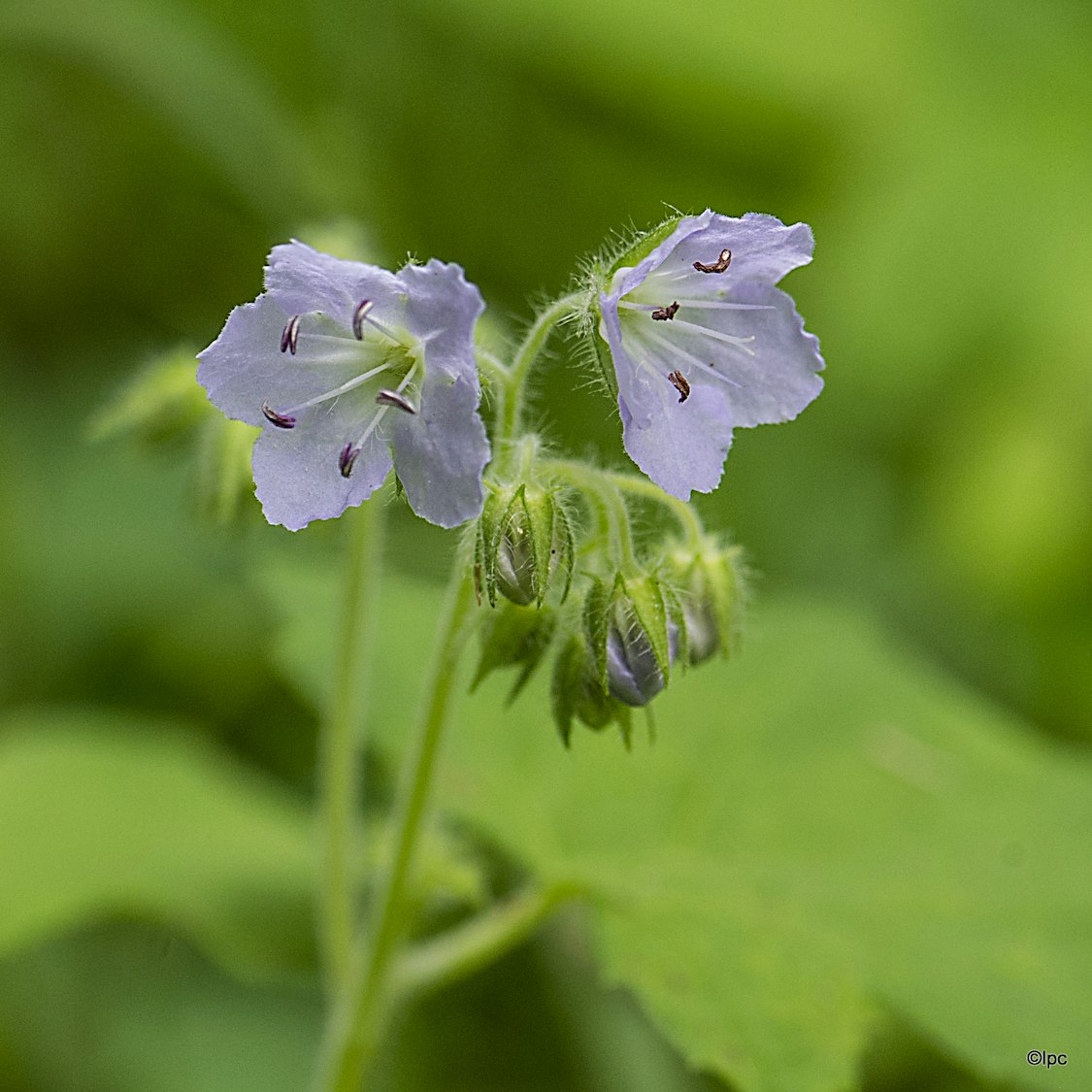
June 15: A prairie home remnant in O’Brien County
Bruce Morrison has closely observed the plants growing near the acreage he and his wife Georgeann bought 20 years ago. These pictures show blue-eyed grass.
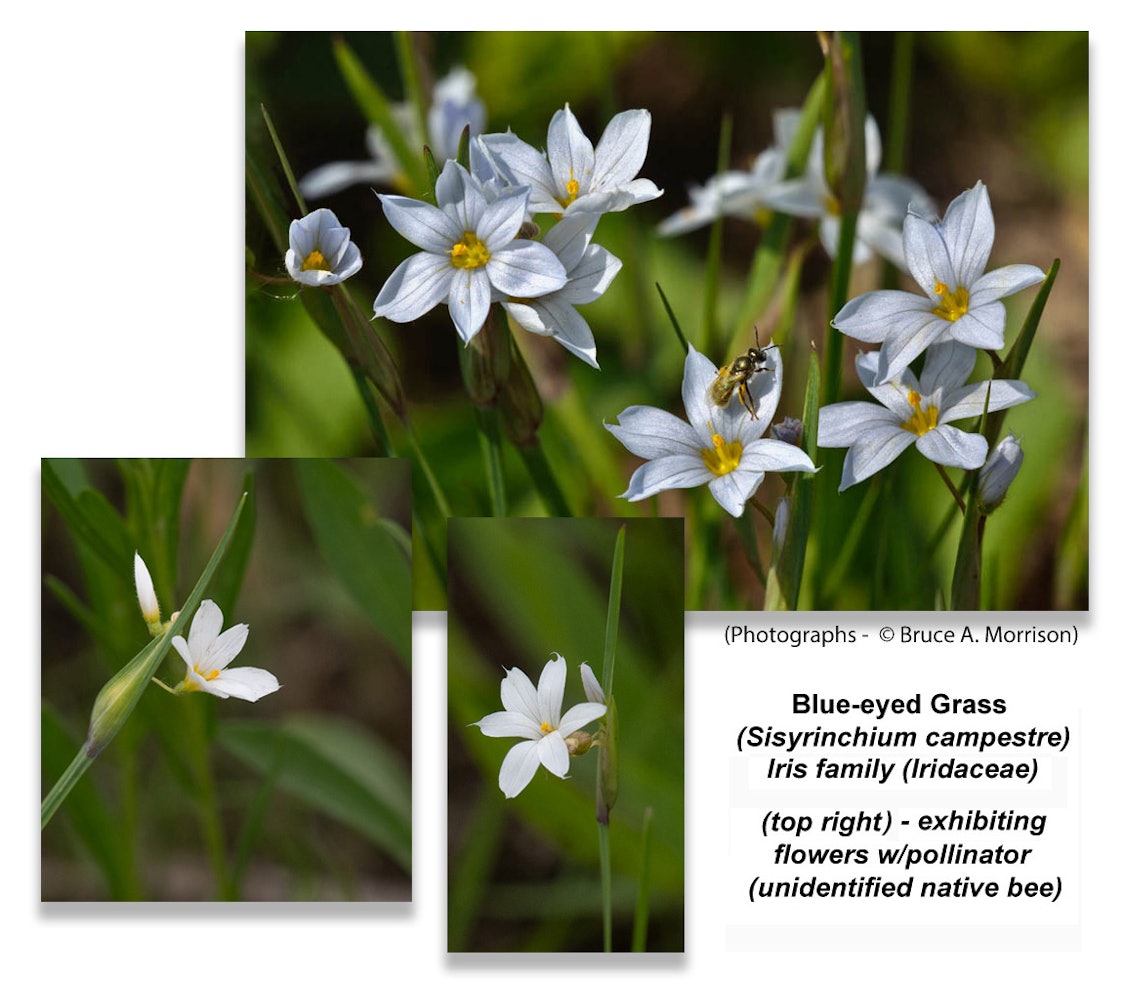
June 22: Sedges
Leland Searles shared photographs and knowledge about a complex group of native plants. “Carex sedges often are overlooked because they look so much like grasses,” he wrote. “And with wide variation in their appearance and very tiny details, they are a daunting group of plants to learn. But with patience, those details also lead to small moments of awe and wonder at the different symmetries and adaptations of each.”
This image shows Carex grisea, a sedge without beaks that resembles “grapes on a string,” and is “a fairly common species of open, damp woods.”
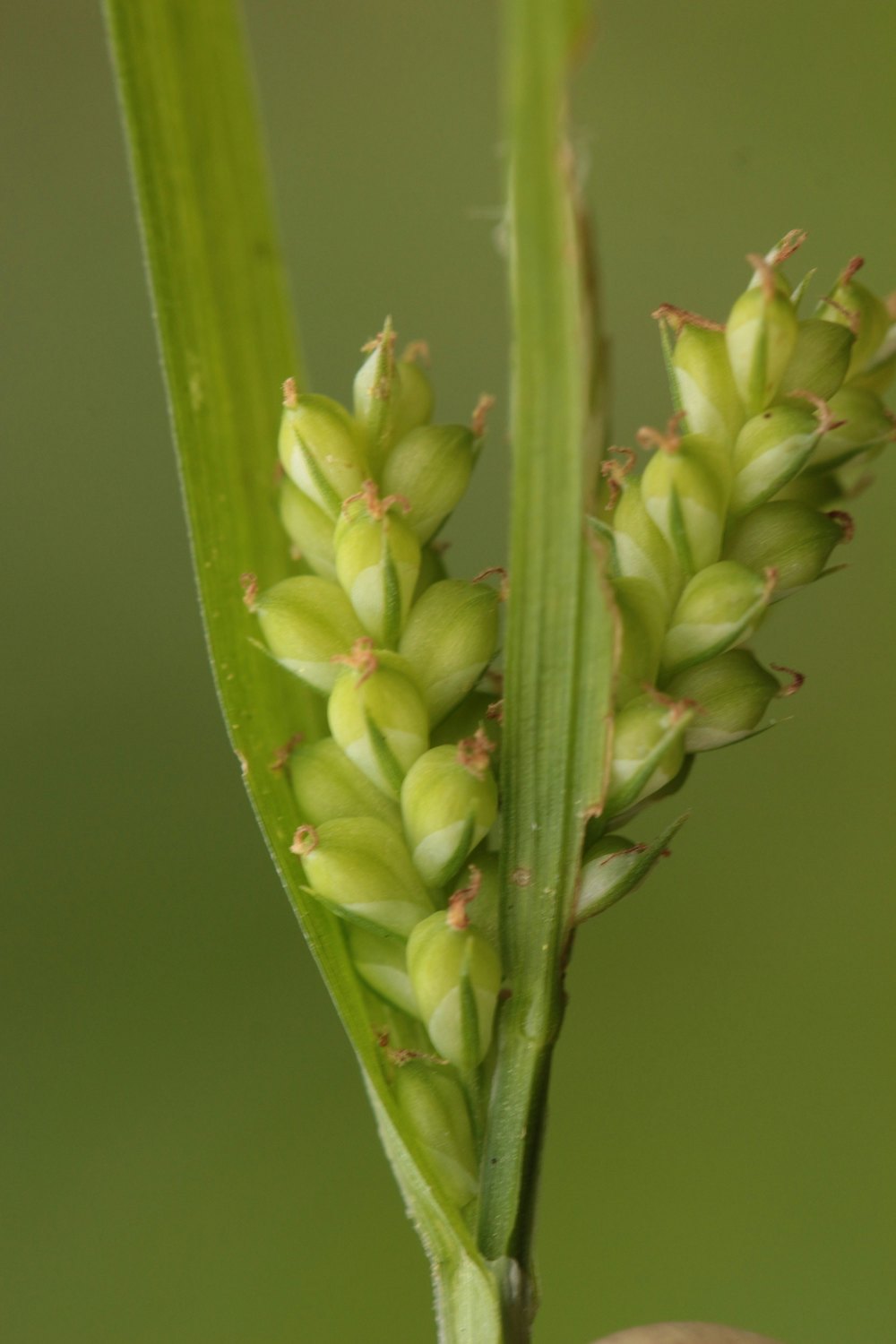
June 29: Striped white violet
I still wasn’t walking well on uneven ground, so I stayed close to home and photographed plants that grow in our Windsor Heights yard. Striped white violets are less common than the white variation of common blue violet.
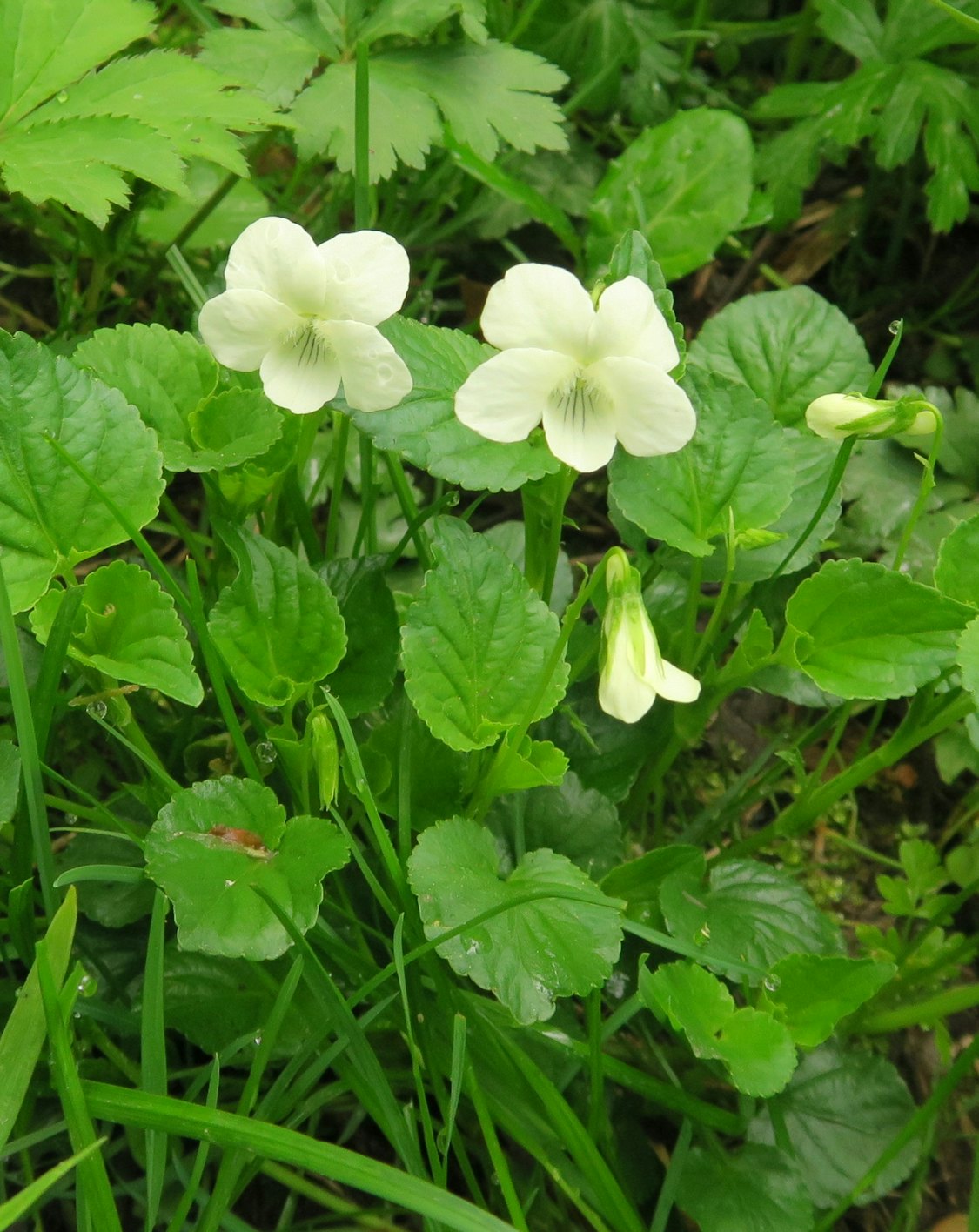
July 6: A visit to the Rock Creek Wildlife Area
On a day off in late June, Katie Byerly took her camera and two yellow labradors on a tour of a lovely natural area in Mitchell County. It was hard to choose one picture from this post, but I landed on this one because it was Katie’s first encounter with Clasping Bellwort, also known as Venus’ looking glass.
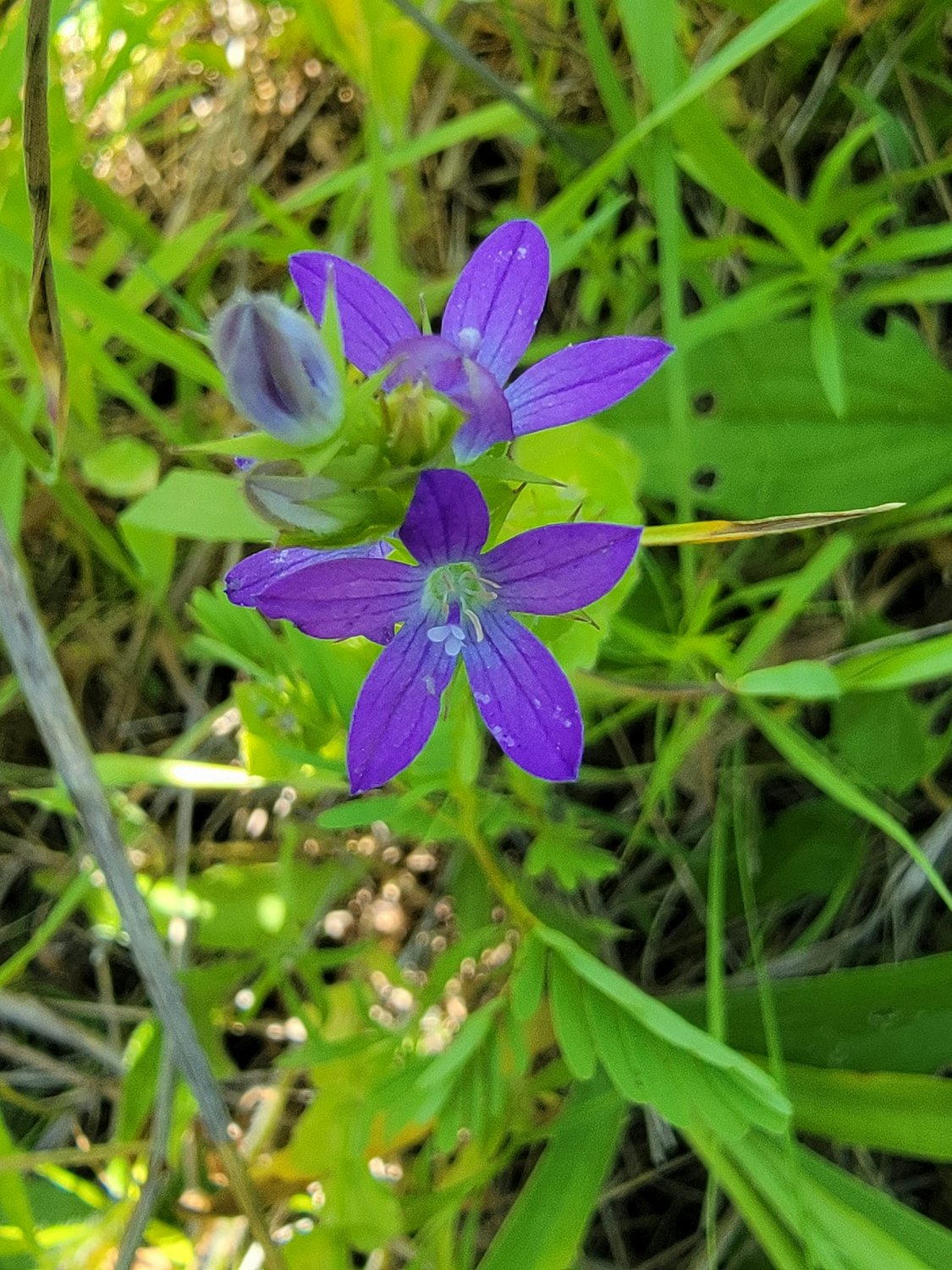
July 13: Fragile fern
Lora Conrad deeply researched a native plant that “often goes unnoticed among the more eye catching flowers.” She captured images throughout the spring and summer. “Here are several close views of unfurling fiddleheads of fragile fern.”

July 20: A thriving farm prairie strip
In early July, I visited Lee Tesdell‘s century farm in northern Polk County for a “field day” focused on prairie strips. Lee has some impressive biodiversity in the strip planted between fields on a corn and beans rotation. I loved seeing several colonies of windflower, also known as thimbleweed. Another highlight was adding a new plant to my “life list”: Illinois bundleflower.

July 27: American bellflower (Tall bellflower)
I returned to one of my all-time favorites, because in addition to being beautiful, American bellflower plants are within easy walking distance of my home on the trails of Windsor Heights and Urbandale. This shot shows the range of deep and pale purple flowers.
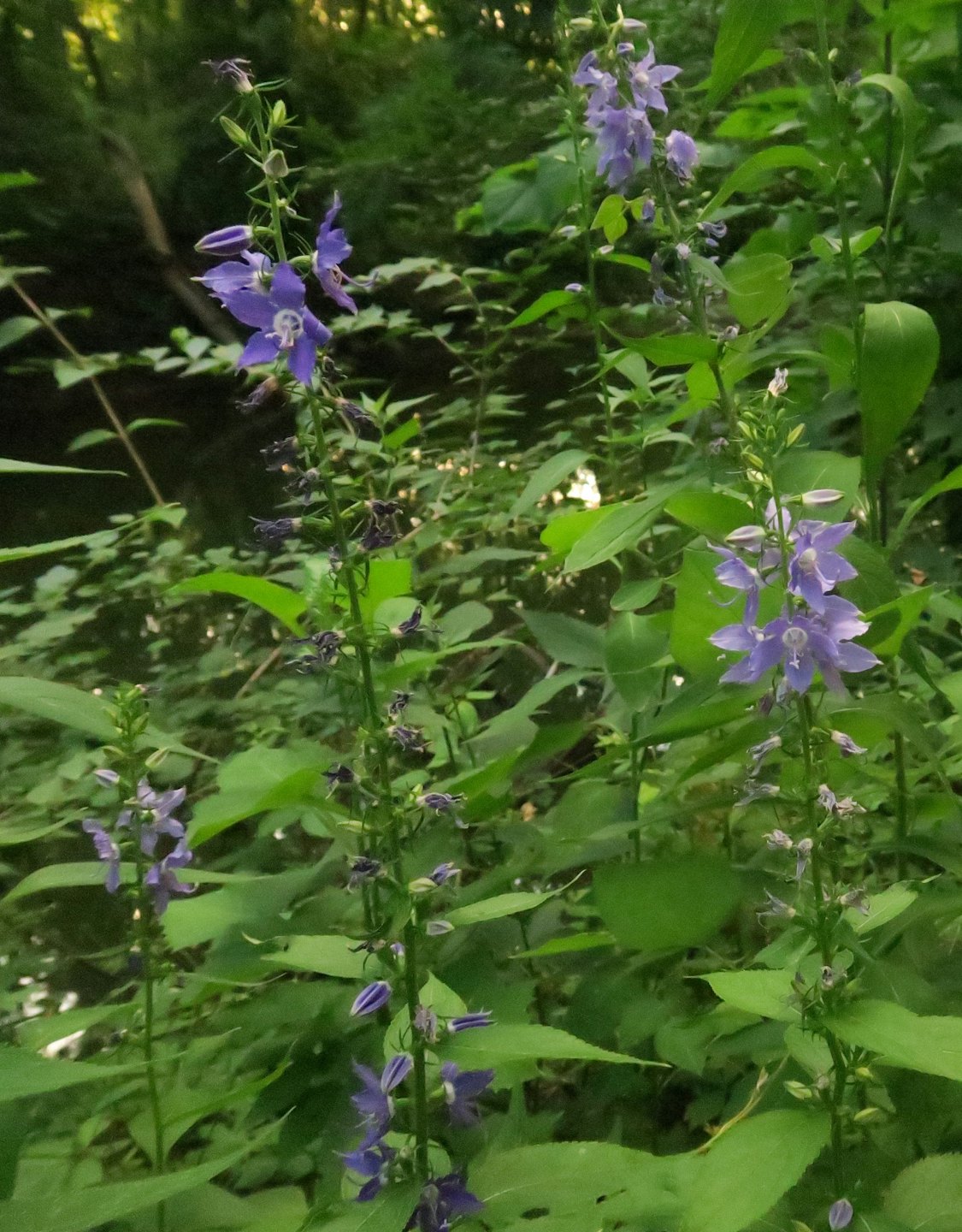
August 3: Rattlesnake master
I had featured this prairie plant during the second year I was writing about wildflowers, but I’d long hoped to return to the subject with better pictures and a more complete view of rattlesnake master’s life cycle. I think I took this picture on Mike Delaney’s Dallas County prairie, where I seem to find more rattlesnake master every year.

August 10: A visit to the Hansen Wildlife Area
Katie Byerly had a chance to tour the Hansen Wildlife Area in Cerro Gordo County with the North Iowa Nature Club. Dave and Patty Hansen led the tour of the area they have helped restore to prairie and want to preserve for future generations. Katie commented that she’d never seen so many tall prairie cinquefoil in one place.

August 17: Flowers of Augusts past
My plans to feature a different plant fell through when I couldn’t find it blooming, so I went through my archives looking for pictures I had taken during the month of August in past years. This picture shows monkey flower, which I found blooming in a small prairie patch in August 2018.

August 24: Fringed puccoon
Bruce Morrison has been fortunate to find this uncommon species near his O’Brien County home. Fringed puccoon thrives on gravel hillsides. Bruce wrote, “This photograph shows an individual plant in mid May, about 5-6 inches tall with the first blooms of spring.”
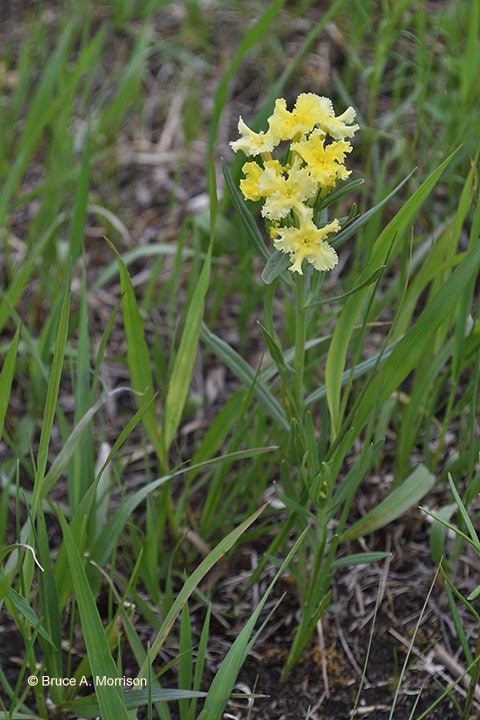
August 31: The ant and the trillium
Diane Porter gave me permission to cross-post this piece, first published on her website Birdwatching Dot Com. Lora Conrad had covered prairie trillium for Bleeding Heartland in 2019. Diane focused on the essential role of ants in the plant’s life cycle. In this image, “the six-gored, yellowish thing that looks like a squash is the seed pod, which formed in the space between the three petals. It appeared after the trillium flower was past.”
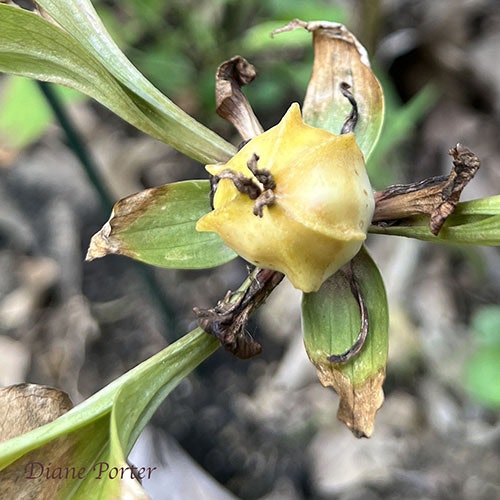
September 7: Wild onion or wild garlic
I learned so much from this essay by Lora Conrad. Here’s one of her shots: one flower is open, and seed pods are developing on other parts of the plant.
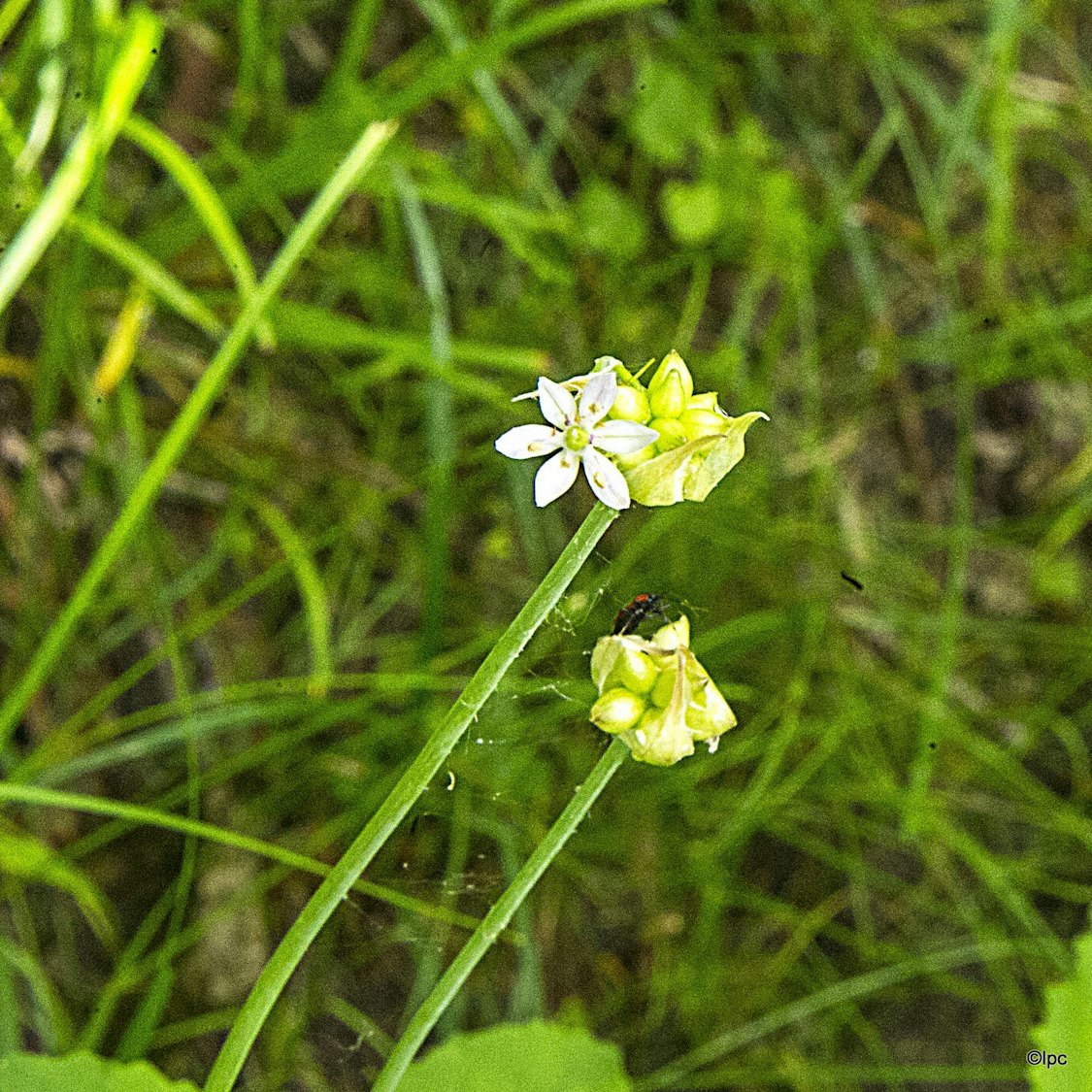
September 21: Motor Mill’s micro-beauty
Kenny Slocum, the naturalist and natural resource manager for the Clayton County Conservation Board, wrote one of last year’s most popular wildflower posts, about an oak savanna restoration project at Bloody Run County Park.
He returned this year to showcase a natural area near Motor Mill historic site, just southwest of Elkader on the Turkey River. The landscape supports many habitats.
Before I had my botanical awakening, like a lot of young outdoor enthusiasts I wanted to check destinations off a list. […] Once I’d “finished” a hike, I rarely thought about going back.
Today, I’d rather walk this same route through Motor Mill a thousand times. I want to come back, to see which plants have remained, arrived, or disappeared as the years pass. Drought years, wet years, cold winters, cool summers… each variation in the year’s weather will lead the prairies and woods to express themselves differently. I could retrace my steps weekly and never have the same experience twice.
I feel the same way about some of my favorite wildflower sites.
Here’s Kenny’s shot of blue cohosh blooming near Motor Mill. I’ve only ever seen these spring wildflowers at Dolliver Memorial State Park in Webster County.
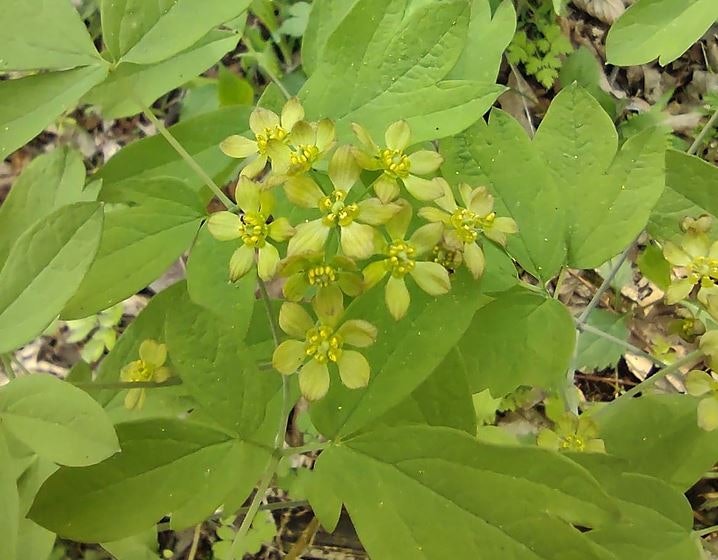
October 5: Coralberry
Lora Conrad compiled photographs of this deciduous shrub in all four seasons and shared the images, along with her research about the plants. The common name coralberry comes from the color of the “drupes,” shown here with leaves in October.
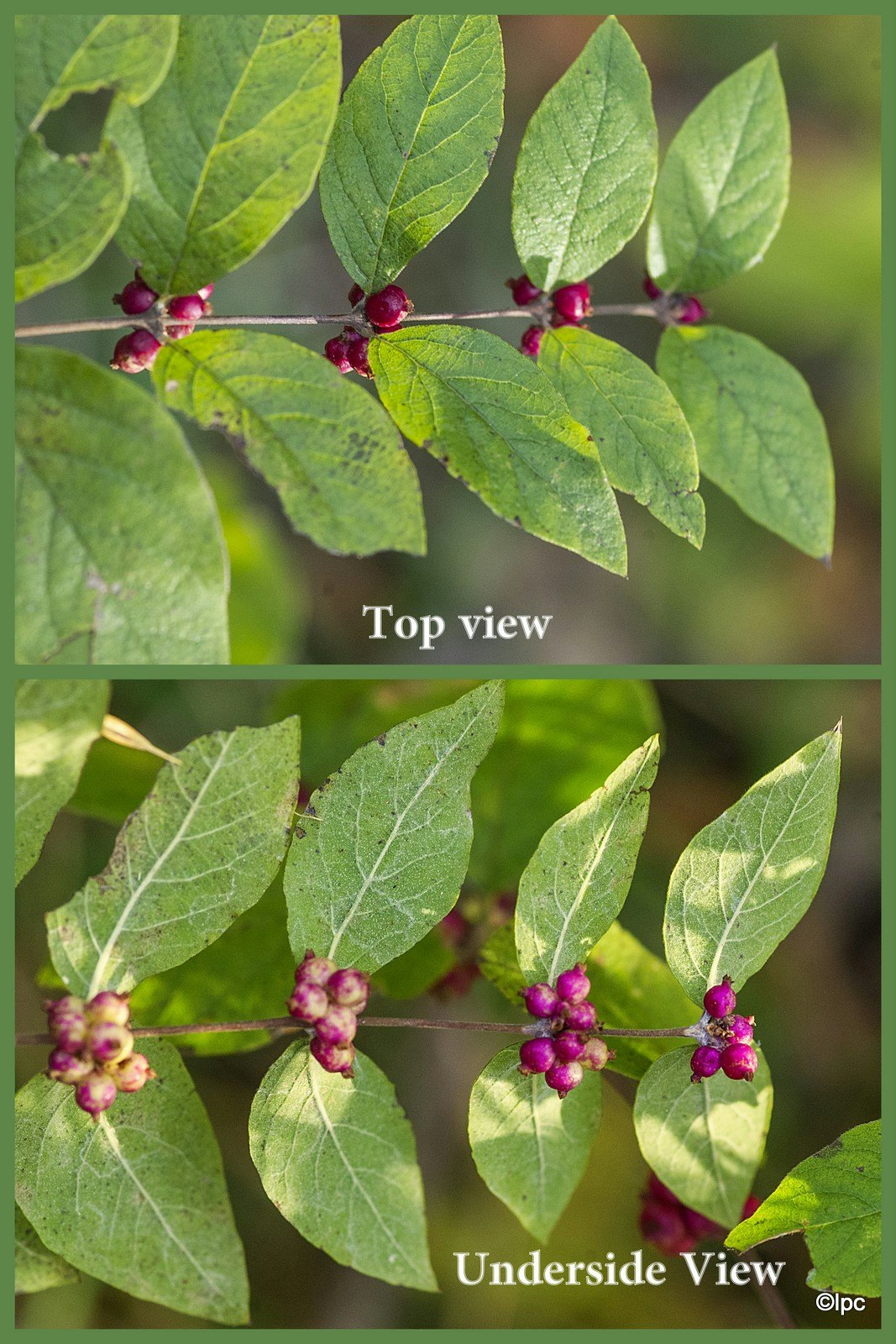
October 12: White wild indigo
Katie Byerly offered to feature one of her favorite Iowa wildflowers. These tall plants are among the easiest to identify on the prairie. Katie wrote,
I don’t think I can fully describe the white of a white whild indigo flower petal. Perhaps it depends on the day and the lighting. Opalescent would be a good word. I enjoy the bright clean white petals in the shiny sunny mid-summer day but also gold pearl color at sunset. It really brings me pleasure to see the different ways this plant catches the sun.

October 19: Flowers of Octobers past
Overwhelmed by political stories and unable to spend a lot of time outdoors, I reached back into my archives and found more than a dozen photos I had taken during the month of October from 2016 through 2021. Near North Walnut Creek in Windsor Heights, I see these plants every fall. Leland Searles had previously identified them as a calico aster subspecies, Symphiotrichum lateriflorum ssp. lateriflorum.
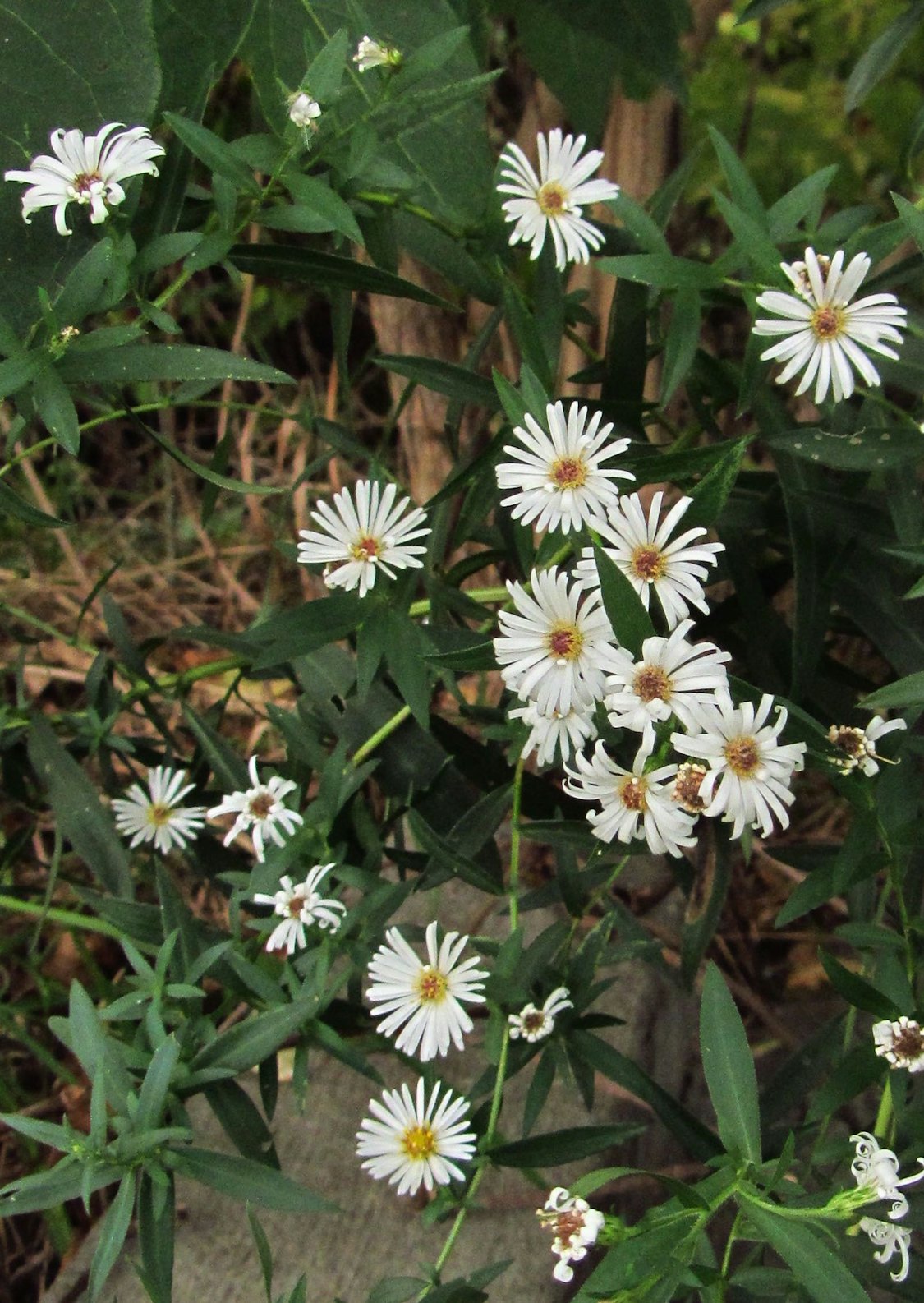
November 9: Baldwin’s ironweed
Diane Porter first published this post on My Gaia, her Substack newsletter “about getting to know nature” and “giving her a helping hand in our own backyards.” Prairie ironweed is a common sight near Iowa fields and roadways, but I don’t believe I have ever found a patch of the related species, Baldwin’s ironweed.

November 16: Autumn in southeast O’Brien County
Bruce Morrison shared another collection of his photographs, oil paintings, and pencil drawings depicting scenes near his northwest Iowa home. This photograph is called “Autumn Canopy”:

December 15: The Baltimore checkerspot and the turtlehead
Kurt Meyer was inspired to write this essay after learning that Northern Mitchell County is home to “perhaps the largest known population of Baltimore checkerspot butterflies,” according to the website for Nelson Paradise Wildlife Area […] These butterflies thrive locally because wildflowers called “turtleheads” thrive locally.”
Kurt didn’t have any images of Mitchell County turtleheads, so I dug up a picture I took at Whiterock Conservancy in 2014. I hope to get back out there next year.
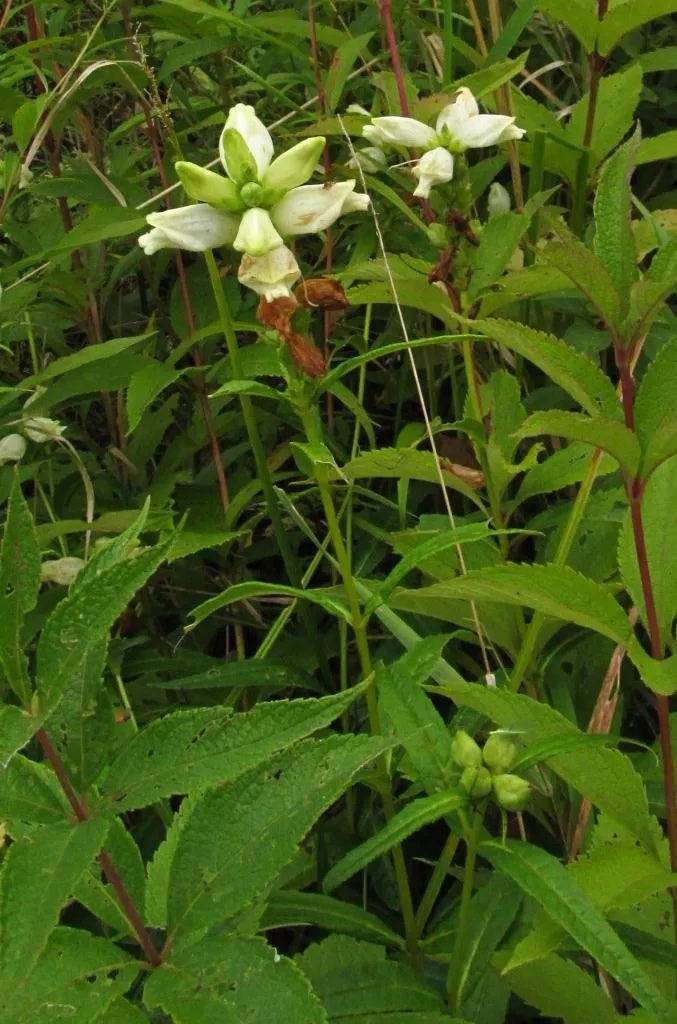
I’ll close out this post with a bonus shot of a dried wildflower arrangement Christine Curry made in November, using plants from Mike Delaney’s restored Dallas County prairie. The tall plant in the middle is big bluestem. The tall plants on either side of that are Indian grass. The light brown near the center of the bouquet is Missouri goldenrod. The darker seed heads near the right are stiff goldenrod. The large pods on the left are common milkweed. The small darker berries near the lower left are coralberry.
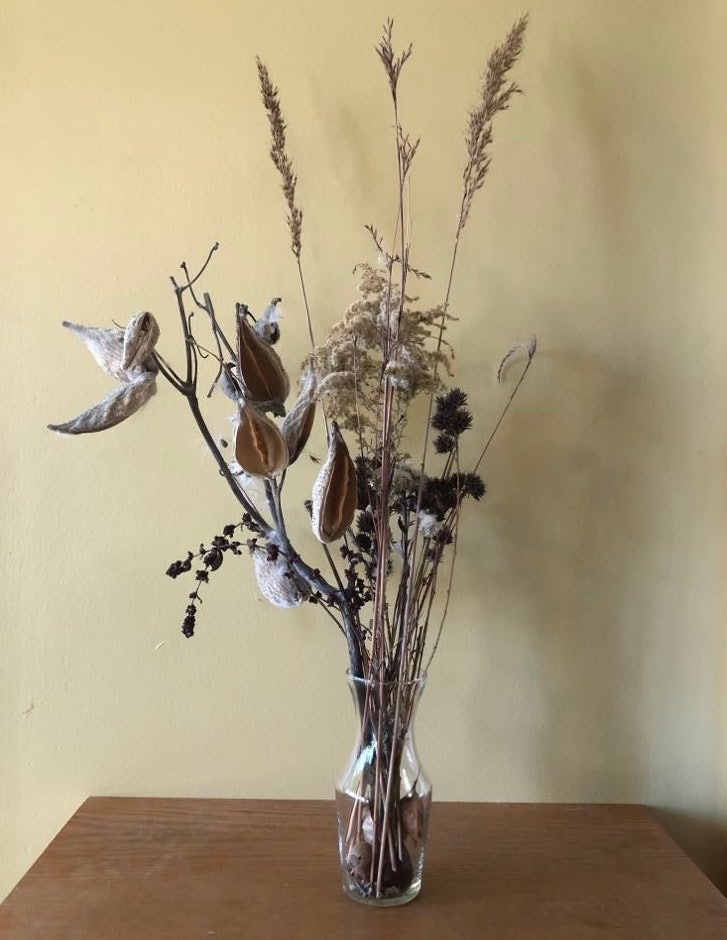

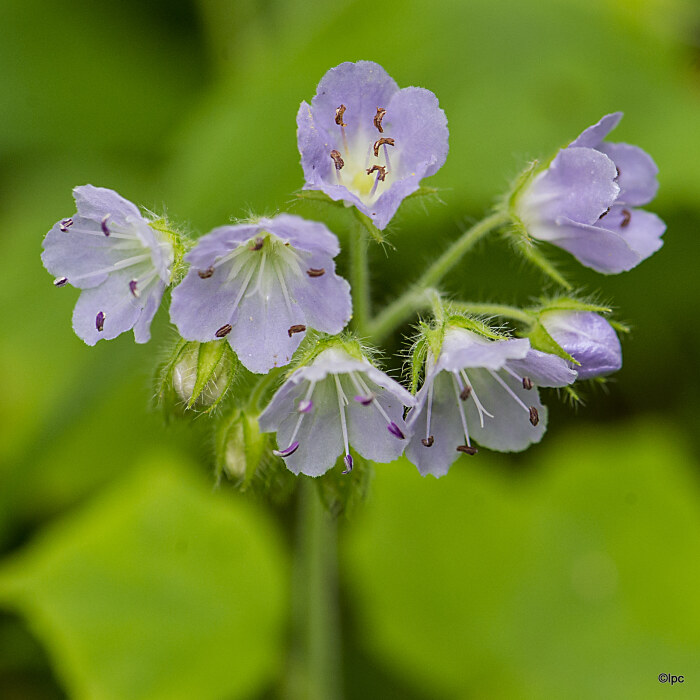
1 Comment
It's very nice to be reminded...
…as the opening date of the Iowa legislative session scarily approaches, that there is an archive of BH wildflower posts available to browse for stress relief and beauty. Thank you.
PrairieFan Sun 1 Jan 12:42 PM